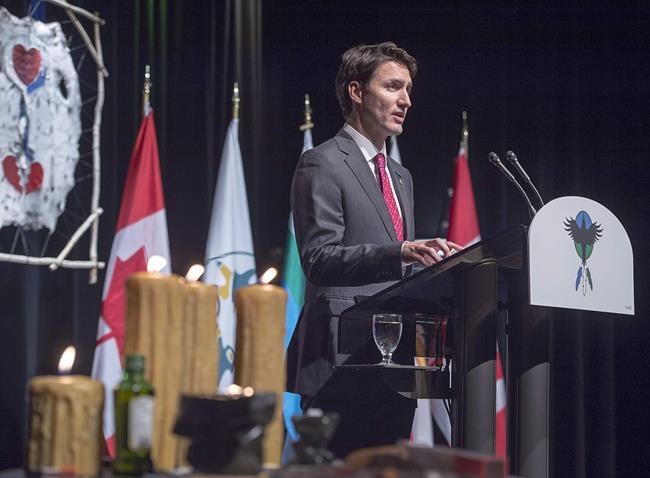‘It’s historic’: Labrador Inuit government working to take over child welfare system
Advertisement
Read this article for free:
or
Already have an account? Log in here »
We need your support!
Local journalism needs your support!
As we navigate through unprecedented times, our journalists are working harder than ever to bring you the latest local updates to keep you safe and informed.
Now, more than ever, we need your support.
Starting at $15.99 plus taxes every four weeks you can access your Brandon Sun online and full access to all content as it appears on our website.
Subscribe Nowor call circulation directly at (204) 727-0527.
Your pledge helps to ensure we provide the news that matters most to your community!
To continue reading, please subscribe:
Add Brandon Sun access to your Free Press subscription for only an additional
$1 for the first 4 weeks*
*Your next subscription payment will increase by $1.00 and you will be charged $20.00 plus GST for four weeks. After four weeks, your payment will increase to $24.00 plus GST every four weeks.
Read unlimited articles for free today:
or
Already have an account? Log in here »
Hey there, time traveller!
This article was published 18/06/2021 (1572 days ago), so information in it may no longer be current.
HAPPY VALLEY-GOOSE BAY, N.L. – Labrador’s Inuit government is embarking on a “historic” move to take over child welfare services from the Newfoundland and Labrador government.
The Nunatsiavut government has begun putting together a plan to take over the system with a goal of having it approved and fully enacted within three years, said Gerald Asivak, the government’s minister of health and social development.
It’s a “groundbreaking” first step toward ending a cycle of colonial harm inflicted on Labrador’s Inuit children that began with the residential school system and is carried on today through the foster care system, he said.

“It’s a broken system,” Asivak said in an interview Friday. “I’m a former social worker within the child welfare system. It was broken then and it’s still broken. It’s an old, patriarchal, colonial system that has no regard for Indigenous identity, culture and values.”
Inuit youth are overrepresented in the province’s child welfare system. In 2018, 15 per cent of kids in the province’s care were Inuit, according to a report that followed an independent review of Inuit children’s experiences in the foster system. Meanwhile, Statistics Canada data shows 1.3 per cent of the province’s population identify as Inuit.
Of the 150 Inuit children in provincial care in 2018, only 11 were still living in their home community and 44 were placed outside of Labrador entirely, the report found.
The report, called “A Long Wait for Change,” says in some cases, children were needlessly separated from their families, communities and cultures. It began with a set of recommendations for sweeping systemic change that would be led by Inuit communities. But the provincial government has been chipping away at the recommendations piecemeal and not much has changed, Asivak said.
When Ottawa’s Bill C-92 came into force last year, which seeks to affirm the right of Indigenous Peoples to have jurisdiction over child welfare in their communities, he said the Nunatsiavut government finally had what it needed to take matters into its own hands. “We have a funding proposal into the federal government right now,” he said.
The Nunatsiavut government has already been running a successful program aimed at keeping Inuit families together and offering support before the child welfare system is even in the picture, he said. That program has now expanded outside of Nunatsiavut, which stretches across Labrador’s north coast, and into the central Labrador area of Upper Lake Melville, he said.
That preventive approach of offering care and resources to families before problems grow, rather than investing in supports for foster families once a child is removed, will inform the Inuit-led child welfare system, he said.
“It’s a proud moment for Inuit children and families within Nunatsiavut,” he said. “It’s going to take a few years for full implementation, but it’s going to be very positive, very family-focused and community-focused.”
This report by The Canadian Press was first published June 18, 2021.
